Dongwon F&B’s Canned Tuna
Dongwon F&B’s Market Shares in Canned Tuna Market
Recent Problems in the Market
Basic Information about Advertisements
STP Analysis
STP Analysis (continued)
Message Processing Goals
Communication Objectives
Evaluation of Advertisements
Evaluation of the Campaign
References
The there are 4 series of advertisements to this campaign featuring cow, pig, chicken and duck. In the ad each animal provides one nutrition fact regarding tuna and shows their jealousy towards tuna and their disappointment that they do not possess such nutrition. Thus, it is type of comparative advertisement where tuna is compared to other meat products. The ad shows superiority of tuna compared to other products.
STP Analysis
The market was segmented according to consumer preference of the product. It was divided into three segments like shown in the diagram and Dongwon selected the unfavorable and indifferent group as their target for this advertisement target.
STP Analysis (continued)
The diagram below shows the positioning Dongwon wanted to achieve through this advertisement campaign. The current image of canned tuna in the consumers’ mind is low price, low grade convenient food. Dongwon wants to shift this position to low price well-being and healthy. Thus, they will give impression that canned tuna has benefit that significantly outruns the cost. At the same time they will try to convince the consumers that they are ready to satisfy the changed demands.
Message Strategy & Format
The goal of the advertisement was to change the brand attitude and brand purchase intention regarding the canned tuna product. Before the launch of the ads consumers had no product attribute. However, after the release of the campaign the consumers’ attitude about Dongwon canned tuna has changed to healthy food. Secondly they attempted to convert other consumers to consume tuna products by showing them how much beneficial tuna is. Lastly, through the campaign Dongwon attempted to maintain current consumers and convert them to loyal purchasers.
The selected commercial has both characteristics of lecture and drama. There is mini drama with each animal crying and revealing their jealousy of tuna. There is lecture aspect where the ad provides nutrition information about tuna to the viewers. In terms of Rossiter and Percy’s Matrix Analysis the product falls under low involvement transformational sector. Canned tuna is not a high cost good and people can purchase it easily and there is not much risk associated with it. It is considered as transformational because people buy the product in order to derive satisfaction from the consumption of product. The purchase motif is positive. However, before this advertisement campaign the product was placed in the low involvement informational sector of the grid. People bought the product to stifle their hunger at the time. They didn’t see much benefit to be gained by consuming the product but just consumed it because they didn’t have anything else to eat. Thus, they were purchasing it to solve a immediate problem and the purchase motif was negative. However, this has been changed to transformational through this campaign. Now, people buy tuna because they are aware that tuna contains many nutrition and is very effective for diet. Hence, the current position on Rossiter and Percy’s matrix is on the low involvement transformational. This is shown on the diagram.
Rossiter and Percy Matrix Analysis
High Involvement Informational
High Involvement Transformational
Low Involvement Informational
Low Involvement Transformational
Message Processing Goals
This commercial uses rote learning process. With rote learning viewers need to make no effort to actually learn. The learning happens automatically while the viewer is watching the commercial. Rote learning is passive and automatic form of learning. Basically, it means that people can easily memorize the main point of the advertisement very easily simply just by watching the commercial. Dongwon’s canned tuna commercial also uses rote learning. The ad requires not much effort from the viewers’ part. The ad is easy to follow and understand and learning is passive and automatic. Also at the end of each ad they always include a jingle saying “Dongwon Chamchi” w
Dongwon F&B Homepage (http://www.dw.co.kr/default.htm)
Link to the advertisements (http://video.nate.com/204546779)



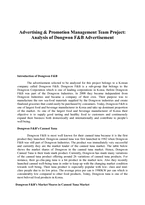
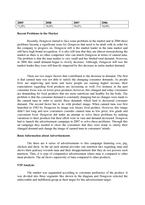
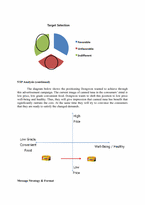

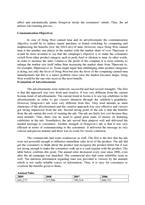
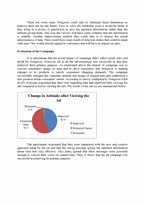
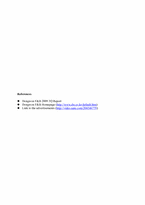
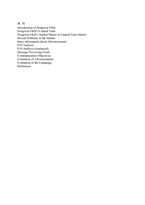
 분야
분야


